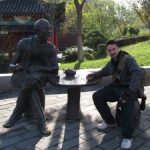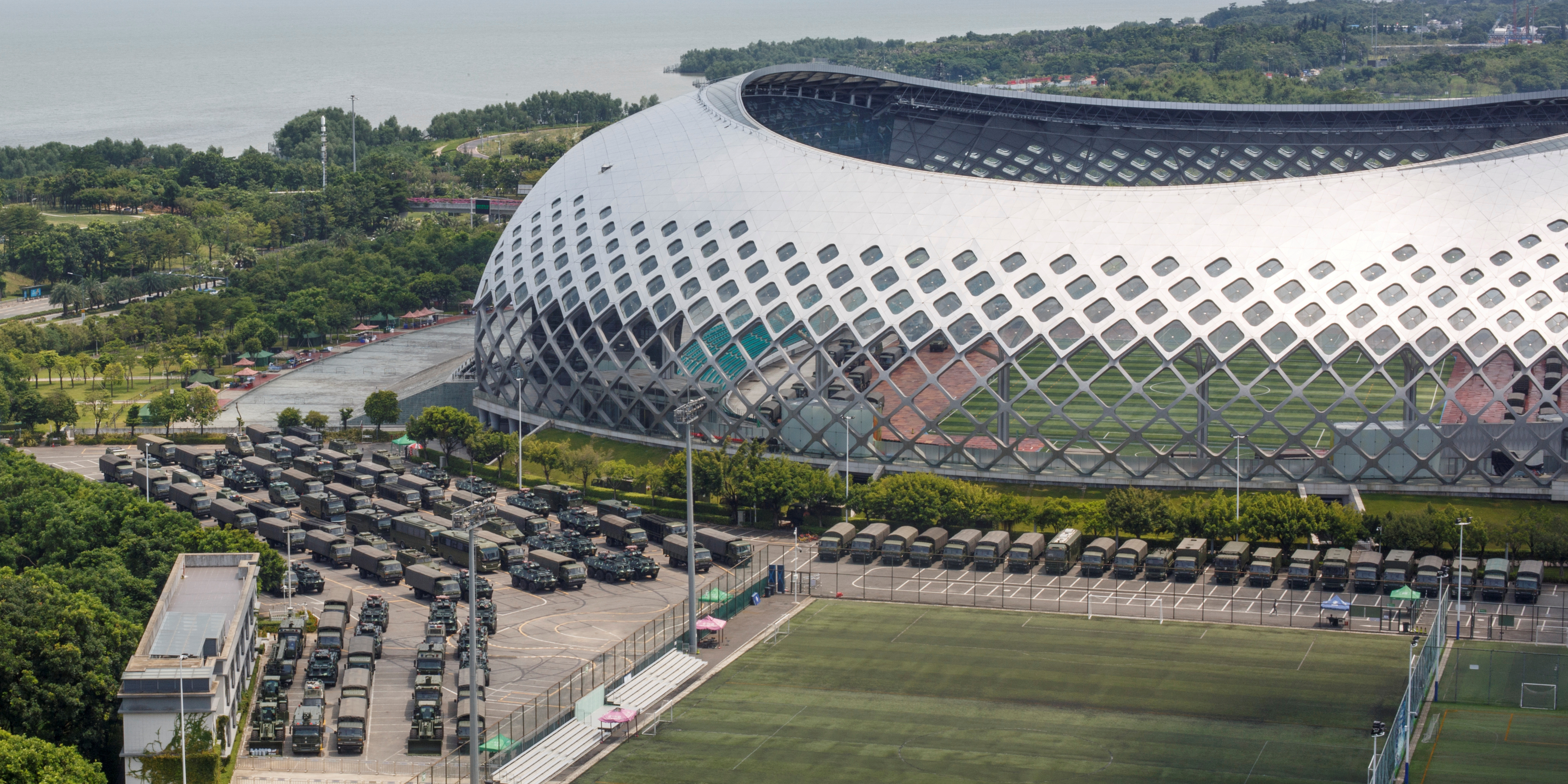- Chinese paramilitary forces – members of the People’s Armed Police – have massed at a sports stadium in Shenzhen, just minutes from Hong Kong, and are training for crowd and riot control.
- The PAP is a special internal security force that straddles the line between the national police force and the People’s Liberation Army, an element typically equipped with less-than-lethal tools to handle domestic unrest.
- “The People’s Armed Police assembling in Shenzhen has sent a clear warning to the Hong Kong rioters,” the Chinese state-affiliated Global Times said of the deployments.
- Experts told INSIDER that these forces would likely only be used as a “last resort.”
- Visit Business Insider’s homepage for more stories.
Chinese paramilitary forces are massing at a stadium just outside Hong Kong as Beijing expresses growing frustration with the unrest that has gripped the city for months.
Weeks of protests, many involving heated and sometimes violent clashes between demonstrators, police and armed gangs, have sent Hong Kong spiraling into one of its worst crises in decades.
While critical of the ongoing protests, Beijing has yet to directly intervene, leaving the fate of Hong Kong in the hands of local law enforcement, which remains confident that it is up to the task of maintaining law and order.
Sun Yun, a China expert at the Stimpson Center, told INSIDER that China is “reluctant” to intervene, explaining that such a decision would be a “last resort.”
But as Beijing toughens its rhetorical stance, Chinese People's Armed Police (PAP) units have massed in nearby Shenzhen. Chinese state media has released footage of armored personnel carriers on the move, and satellite imagery has confirmed the robust PAP presence.
There are three main security forces in mainland China. The Ministry of Public Security (MPS) oversees China's national police force, which is responsible for domestic security. The People's Liberation Army (PLA) is the military, a force primarily aimed at external threats and overseen by the Central Military Commission (CMC).
Then, there's the PAP. "The PAP is this entity that sort of straddles the line," Dean Cheng, a China expert at the Heritage Foundation, told INSIDER. Established in the early 1980s, the PAP has dual responsibilities as an internal security element that could also be called upon in times of war to support the military.
The Chinese state-run People's Daily, citing the Law of the People's Republic of China on the People's Armed Police, explained that the primary missions of the PAP include "dealing with rebellions, riots, serious violent and illegal incidents, terrorist attacks and other social security incidents."
The command structure for the PAP, which was initially overseen by both civilian and military authorities, changed a few years ago, when the PAP lost its civilian authority and was consolidated entirely under the CMC, a body controlled directly by the Chinese president.

The PAP is a force with more riot-control capabilities than the Chinese police but the training to deal with social unrest in a less lethal manner than that the PLA might use. "The purpose of the PAP is to, hopefully, deal with strikers, protesters with less than lethal means," Cheng said.
The PAP, while armed, relies primarily on tools such as rubber bullets, tear gas, and water cannons. In the videos state media put out showing armored vehicles moving into Shenzhen, the guns in the upper turrets had been removed.
"The idea of deploying PAP is to have a less bloody outcome," he explained. "What we don't know is if protesters refuse to disperse or fight back, what happens."

Observers suspect that the rapid movement of the PAP forces into Shenzhen is mostly messaging, demonstrating China can quickly deploy a lot of capable law enforcement units to a problem spot if Chinese officials decide to intervene.
"Beijing hasn't decided to forcefully intervene to quell the Hong Kong riots, but this option is clearly at Beijing's disposal," the Global Times, a provocative Chinese state-affiliated tabloid, wrote Thursday.
"The People's Armed Police assembling in Shenzhen has sent a clear warning to the Hong Kong rioters. If Hong Kong cannot restore the rule of law on its own and the riots intensify, it's imperative then for the central government to take direct actions."
Chinese government officials and military leaders have also said that the Chinese military, which has a garrison in Hong Kong, could also be used to restore stability, although Cheng said that China watchers would likely see Ministry of Public Security forces, of which Hong Kong police are not, intervene before either of the other two security forces.
Yun explained to INSIDER that China has already rhetorically laid the groundwork for intervention by labeling acts of violence by some protesters as "terrorism," among other tough statements and actions.
A spokesperson for the Hong Kong and Macao Affairs Office, earlier this week called for swift punishment "without leniency, without mercy." And the Chinese military warned that the forces in Shenzhen can be in Hong Kong in just 10 minutes.
Hong Kong police commander Yeung Man-pun told the Associated Press that his forces are under tremendous pressure but added that local law enforcement is "confident the police have the capability to maintain law and order" without outside help.

